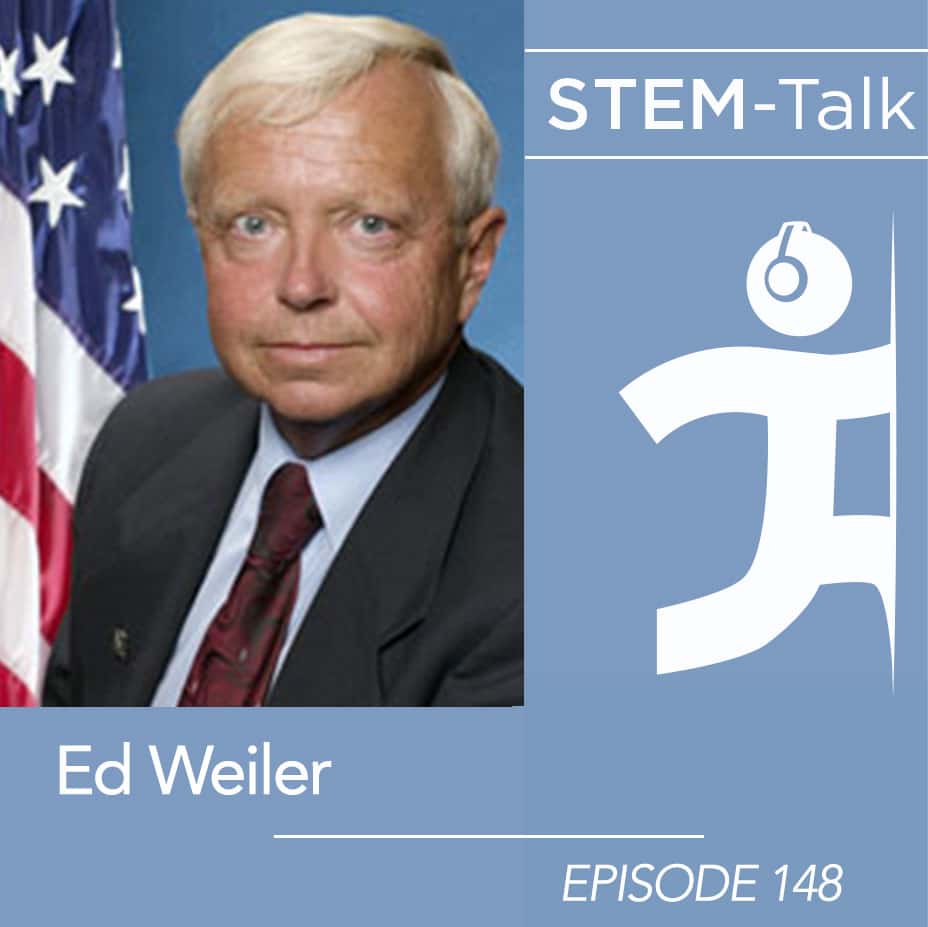
Episode 148: Ed Weiler on the Hubble and James Webb space telescopes, Mars rovers and NASA’s search for life
 2023-01-30
2023-01-30
Our guest today is Dr. Ed Weiler, a retired NASA scientist who spent 20 years as the chief scientist for the Hubble Space Telescope, the forerunner of the James Webb.
During his 33-year NASA career, Ed wore many hats, including Associate Administrator of the Science Mission Directorate; Center Director of NASA’s Goddard Space Flight Center, Associate Administrator for NASA’s Space Science Enterprise, chief of the Ultraviolet/Visible and Gravitational Astrophysics Division and director of the Astronomical Search for Origins Program.
In today’s episode, we talk to Ed about:
— About NASA’s accomplishments in the past year, including the Perseverance mission, the success of the James Webb telescope, and the launch of Artemis-1.
— Ed’s experience as the Chief Scientist for the Hubble Space Telescope during its early development.
— Ed’s time as the director of NASA’s Astronomical Search for Origins program.
— Ed’s role in the development of the New Horizons space craft and its mission to fly by and study Pluto and it’s moons.
— Ed’s belief that in the next 20 to 50 years, we will be able to the prove the existence of other life in the universe.
Show notes
[00:02:59] Dawn opens the interview mentioning that she and Ed share a common experience of going through the selection process to become a NASA astronaut.
[00:03:55] Dawn mentions that instead of becoming an astronaut, Ed joined NASA in 1978 as a scientist, serving in a variety of science leadership roles throughout his career, eventually retiring in 2011 after 33 years of service. Dawn asks Ed to talk about his various accomplishments at NASA.
[00:05:57] Dawn asks Ed about his feelings toward the various accomplishments of NASA in recent years since his retirement, such as the Perseverance mission, the success of the James Webb telescope, and the launch of Artemis-1.
[00:08:42] Ken asks Ed to discuss the recent images from the James Webb telescope, images that have captured the public’s imagination.
[00:12:10] Dawn asks if it’s true that Ed decided to become an astronomer and go to work for NASA when he was only 13 years old.
[00:15:36] Dawn mentions that we have had several guests on STEM-Talk that cite the Apollo missions as their inspiration for pursuing a career in science. Dawn points out that Ed was already in grad school when Neil Armstrong first stepped on the moon. Dawn asks Ed about watching the moon landing on the campus of Northwestern University.
[00:16:48] Ken asks about Ed’s experience as the Chief Scientist for the Hubble Space Telescope during its early development.
[00:25:01] Dawn points out that after graduating from Northwestern University, Ed joined the research staff at Princeton while also working at the Goddard Space Flight Center. In 1978, Ed became a staff scientist at NASA headquarters and Dawn asks how that position came about.
[00:29:45] Dawn mentions that Ed was also the director of NASA’s Astronomical Search for Origins program and asks Ed to talk about that experience.
[00:33:03] Ken mentions that in 1998, Ed became the Associate Administrator for Space Science for the first time. Ken goes on to mention when Ed was first approached about the position, he said “not in a million years.” Ken asks what eventually changed Ed’s mind.
[00:37:10] Dawn asks Ed about his first stint as NASA’s Associate Administrator, where he oversaw several successful missions and set in motion an ambitious Mars exploration mission.
[00:43:43] Dawn asks Ed to talk about the role he played in the development of the New Horizons craft and its mission to fly by and study Pluto and its moons.
[00:45:46] Ken mentions that when Ed’s first tenure as Associate Administrator for the Science Mission Directorate ended in 2004, he took over the leadership of the Goddard Space Flight Center, which is one of the premier institutions for space and earth science missions. Ken asks Ed to talk about the work he did at the center.
[00:50:06] Dawn mentions that Mike Griffin, our guest on STEM-Talk episodes 23 and 134, was the NASA Administrator in 2008, and asked Ed to return as Associate Administrator. Dawn asks why Ed was brought back again and what he was asked to accomplish.
[00:56:47] Ken asks Ed about one of his priorities at NASA, which was RTGs (Radio-Isotope Thermo-Electric Generators). Ken asks Ed why this was a priority, and what that experience was like.
[01:00:21] Dawn mentions that Ed was an early proponent of STEM education, and during his time as Associate Administrator at NASA, he required all project proposals to set aside one to three percent of their budget for STEM education. Dawn goes on to ask Ed about a letter he received from a Mexico City student in the early days of Hubble that made an impression on him.
[01:06:38] Dawn mentions that Ed has been quoted as saying that in the next 20 to 50 years, we will be able to prove the existence of other life in the universe. She asks Ed why he’s so confident about that.
[01:14:13] Ken follows up on the previous question and asks Ed what his thoughts are on the Pentagon’s recent report on Unidentified Aerial Phenomena (UAP), which Ken and Dawn discussed in episode 127 of STEM-Talk. While the study does not imply that these UAPs are extraterrestrial crafts, the report does indicate that they are likely physical objects of some kind. Ken asks Ed what he thinks these objects are?
[01:20:32] Dawn wraps up the interview by mentioning that Ed has been known throughout his career for building effective teams and, toward that end, he would often take his staff water skiing.
Ed Weiler Wikipedia page
Learn more about IHMC
STEM-Talk homepage
Ken Ford bio
Ken Ford Wikipedia page
Dawn Kernagis bio
More Episodes
Create your
podcast in
minutes
- Full-featured podcast site
- Unlimited storage and bandwidth
- Comprehensive podcast stats
- Distribute to Apple Podcasts, Spotify, and more
- Make money with your podcast
It is Free
- Privacy Policy
- Cookie Policy
- Terms of Use
- Consent Preferences
- Copyright © 2015-2024 Podbean.com




